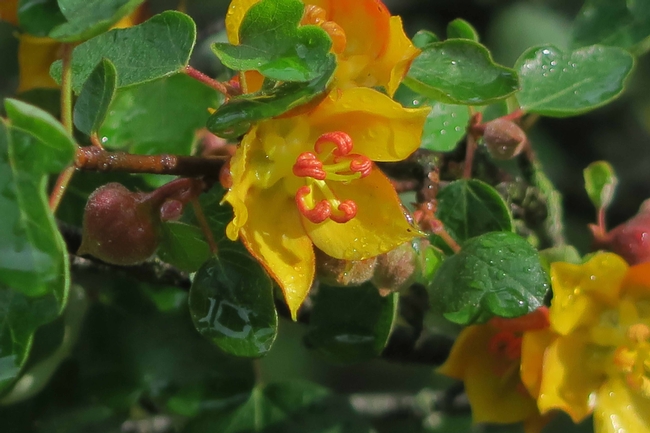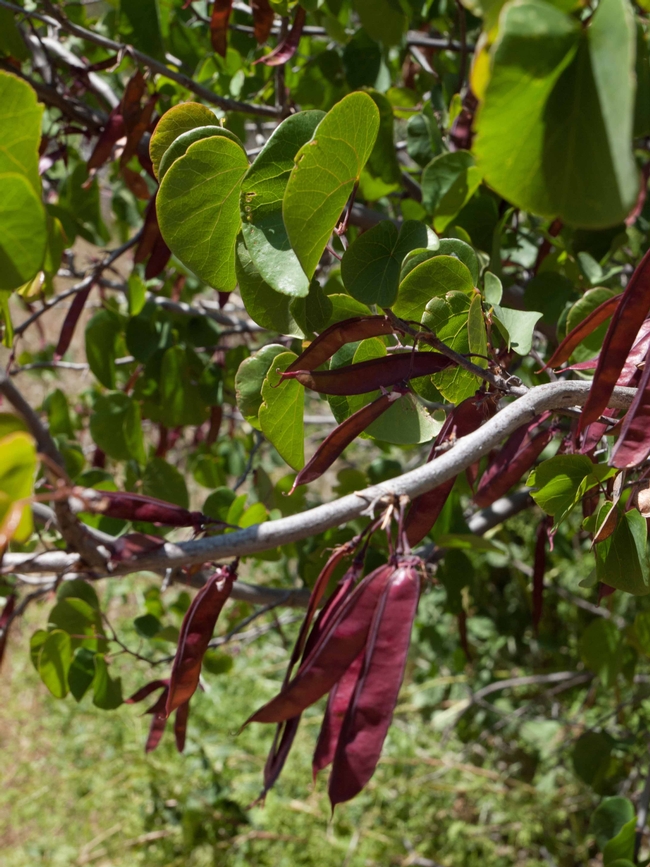By Jeff Oster, UC Butte County Master Gardener, October 25, 2017.
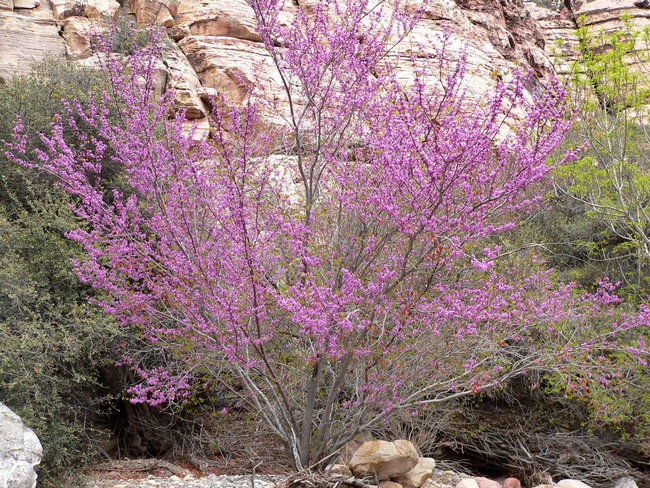
Western Redbud, California Buckeye, Toyon, and California Flannelbush are all plants in this category that attract pollinators, provide interest over several seasons of the year, and can be grown in a number of different gardening environments. They are especially effective planted in groups for repetition of form, and can create informal hedges or provide a backdrop for smaller plants.
Western Redbud (Cercis occidentalis) is native on dry slopes of the coast ranges and Sierra Nevada foothills to 4500 feet and eastward to Utah (usually situated next to a spring or seasonal creek). It is a deciduous, multi-trunked shrub or small tree with a long life span, growing two to three feet per year and reaching to six to twenty feet over time. Magenta flowers appear in February to April before the leaves, and last for two to three weeks. The leaves are kidney-shaped and bluish-green; they can provide a lovely garden backdrop for summer-blooming plants, and turn yellow in fall. Reddish-purple seed pods hang from the branches in winter. The bushes are impressive in groups.
Western Redbud likes full sun, and will grow faster if given some summer water. It will tolerate clay soils and soils with lime or acid (pH levels 5.5 to 8). It can provide good stabilization along a ridge or bank. The roots perform the useful role of fixing nitrogen. A good winter chill is necessary for good flower set. The flowers and young pods are edible; the plants will self-seed.
Western Redbud attracts hummingbirds, goldfinches, butterflies, and bees (including leaf-cutter bees) to its flowers. It is deer resistant, and resistant to Oak Root Fungus. While generally pest-free, Western Redbud is susceptible to caterpillars and scales, and to crown and root rot.
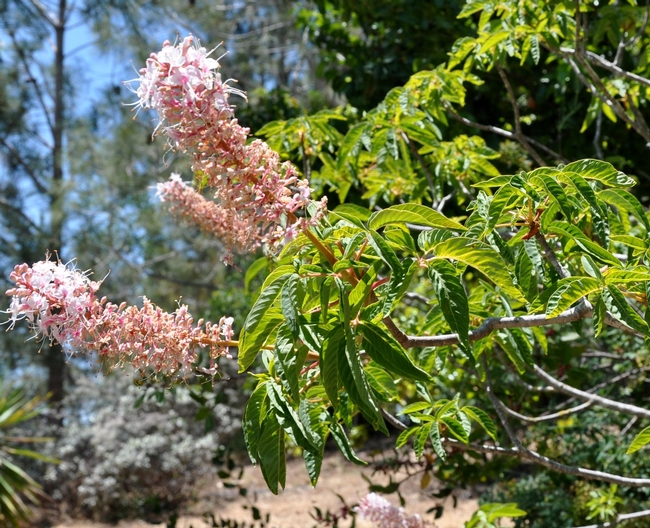
California Buckeye will grow in conditions ranging from partial shade to full sun, and it is drought tolerant but needs regular water during the first few years. It will tolerate clay and serpentine soils (pH 4 to 8) and seasonal flooding, and is useful as a slope stabilizer. In the garden it will drop leaves early (going summer dormant) if it gets dry; otherwise leaves will drop in the fall.
The nectar of the California Buckeye attracts hummingbirds, native bees and butterflies.
California Buckeye is poisonous to livestock, Asian honey bees, and fish. Its seeds are toxic unless processed. It is deer-resistant.
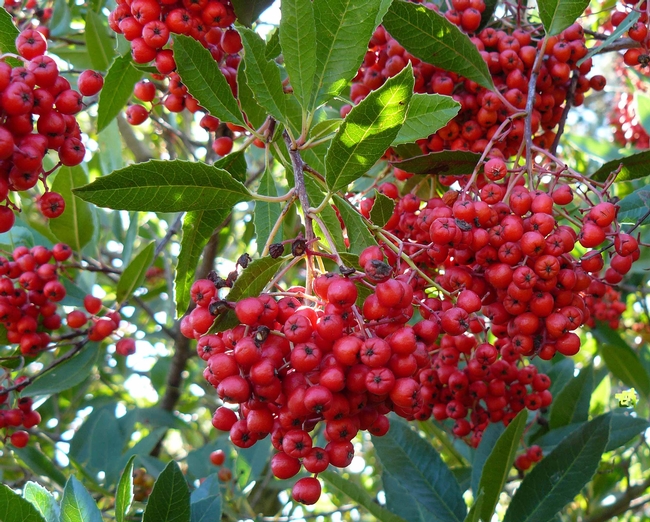
While Toyon likes full sun, it can tolerate full shade, and will grow in a variety of soils (pH 5 to 8), and can help stabilize a ridge or bank. It is drought tolerant after a few years, but will tolerate some water if drainage is good.
Toyon attracts a wide range of pollinator insects including native bees, pollinator flies, and butterflies. Winter fruit attracts cedar waxwings, towhees, finches, flickers, grosbeaks, bluebirds, robins, thrushes, mockingbirds, quail, tanagers, warblers and sparrows. Often the ripe berries ferment before they are eaten, so birds may get a little tipsy. Mammals, including coyotes and bears, also eat and disperse the berries.
Toyon is susceptible to fire blight and root rot (if over-watered). Over time, it will become deer resistant.
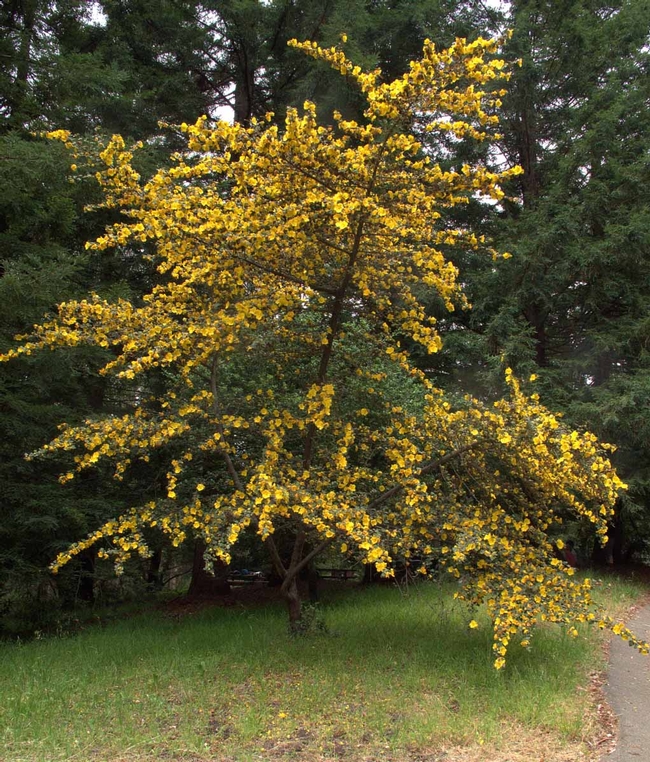
California Flannelbush likes sun to part shade. It is drought tolerant and needs no summer water but must have good drainage, preferring well-drained (sandy) soils (pH 6 to 8) near natural drainage channels (placement along the top of a riverbank is ideal.
California Flannelbush attracts bees and butterflies, has few pest problems, and is deer resistant.
The following two charts refer to plants referenced in the three part series on native plants that thrive in Chico and Lindo Channel.
Channel Native Plant Characteristics
Channel Natives Flowering Time and Color
